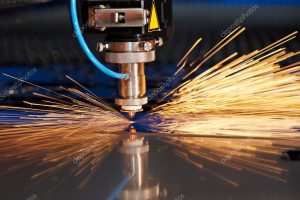 Custom engineering solutions rely in large part on material selection in the design and application of parts and components. In fact, the material selection process is one of the fundamentals of design and engineering. The importance of that selection process cannot be understated—it ensures the long term success of the application.
Custom engineering solutions rely in large part on material selection in the design and application of parts and components. In fact, the material selection process is one of the fundamentals of design and engineering. The importance of that selection process cannot be understated—it ensures the long term success of the application.
Material Selection
Think of material selection as a matter of functionality. As an example, a bridge constructed with foam girder supports rather than steel ones, is not functional if that bridge is intended for vehicles. In order for a product to function, it must be made of the right materials; and the functionality of the material is defined by its mechanical properties. Therefore, the material must have the applicable mechanical properties to function as designed. These are, in total, the demonstrative physical properties that materials exhibit upon the application of any type of external force.
A material’s mechanical properties then are the key to custom engineering solutions for product design and development. For a product to function as designed, such factors as understanding a material’s mechanical forces or load requirements, its modulus of elasticity, tensile strength, elongation, hardness, fatigue limit, wear and tear, and thermal properties and more, must be evaluated in relation to the product application requirements.
Application failures arise from an improper material selection. Simply put, if an application demands high tensile strength, a material with higher tensile strength must be selected. If the product is to be used outside, such factors as temperature range and the effect of ultraviolet light must be considered. If proper material selection is not adhered to, the product’s functionality will be at best highly unpredictable and at worst, dangerous.
Important Factors to Consider
To ensure the integrity of design and prevent any susceptibility to product failure, the material selection process assures that a design technically fits the desired properties. Mechanical properties of materials can change and often do once the material is subjected to variable conditions—the impact of the working environment, temperature fluctuation, rate of load, or general wear and tear can alter a material’s properties. Consider that a material tested at room temperature may not perform the same at temperatures above or below room temperature. A custom engineering solution would carefully select the appropriate material to suit those possible conditions.
Material Cost
Other important factors to consider in material selection include the actual material costs, the manufacturability of the material, its environmental impact, and its chemical and physical properties. Selecting a material must work on more than a functional level. The material must not only meet the application requirements of the product, but it must be cost-effective, too.
Manufacturability
The manufacturability of the material for your product must be considered, too. Transforming raw material into a finished product is one aspect of its manufacturability, but the material must be engineered in such a way as to make the product easy to manufacture.
Environmental Impact
The environmental impact of material should also be evaluated. Is the material safe or hazardous? How was it processed and manufactured for production? Can it be recycled and repurposed at the end of its use? These are important factors to consider in selecting a material.
Chemical and Physical Properties
Lastly, a material’s chemical and physical properties will affect its thermal characteristics and its weight. How the material functions or responds to an increase or decrease in temperature or heat must also be a factor in material selection.
Material selection in engineering is important for the long term success in the manufacturing of any part or component. Proper selection of materials is essential in providing custom engineering solutions. A product’s functionality depends on selecting the material with mechanical properties for the product to perform as designed. To eliminate the risk or susceptibility of product failure, understanding the factors in material selection in the engineering of parts and components will ensure that the product has the best chance of success. At H. Loeb providing engineering solutions for our customers is one of the core experiences you will receive when partnering with us.
